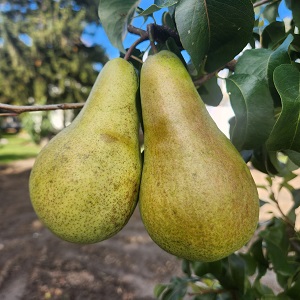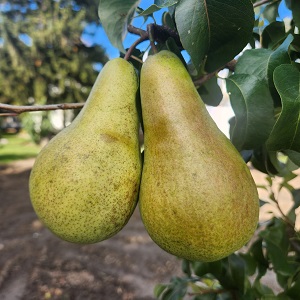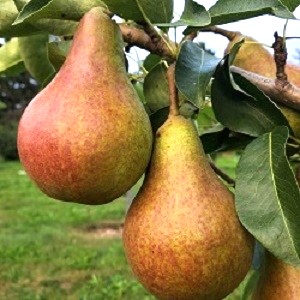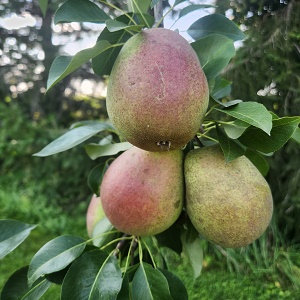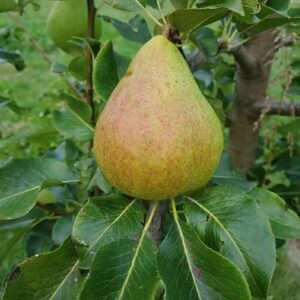Pears (Pyrus communis)
Pears are a great compliment to any home orchard. They usually require less maintenance than other fruit as far as pruning and spraying and tolerate heavy clay soils. Most pear orchards are gone, so Canada must import millions of pounds every years just to meet the present consumer demand. We chose this interesting collection of pears for their wonderful quality of fruit and because they are among the easiest for orchardists to grow organically.
1-2m (3-6') bareroot trees

European Pear : CLAPPS FAVORITE Semi-Dwarf (OHxF87) (Orchard Grade)
$35.95
Description to come...
An 'orchard grade' is a tree that may be somewhat shorter, slightly crooked, or a bit scratched, or for some other reason is not a perfect front lawn specimen. These trees will work just as well in an orchard as a first or number one would, since they still produce the very same fruit.
Growing Tips
Pear Pollination Growing Tip
All European (regular) and Asian pears will pollinate each other providing their bloom times overlap. Generally you can go by the expected harvest time, meaning only the very early and the very late might not be compatible with each other. However, since Asian pears, on average, bloom earlier than Europeans, you might pair an early European with a mid or late Asian.
